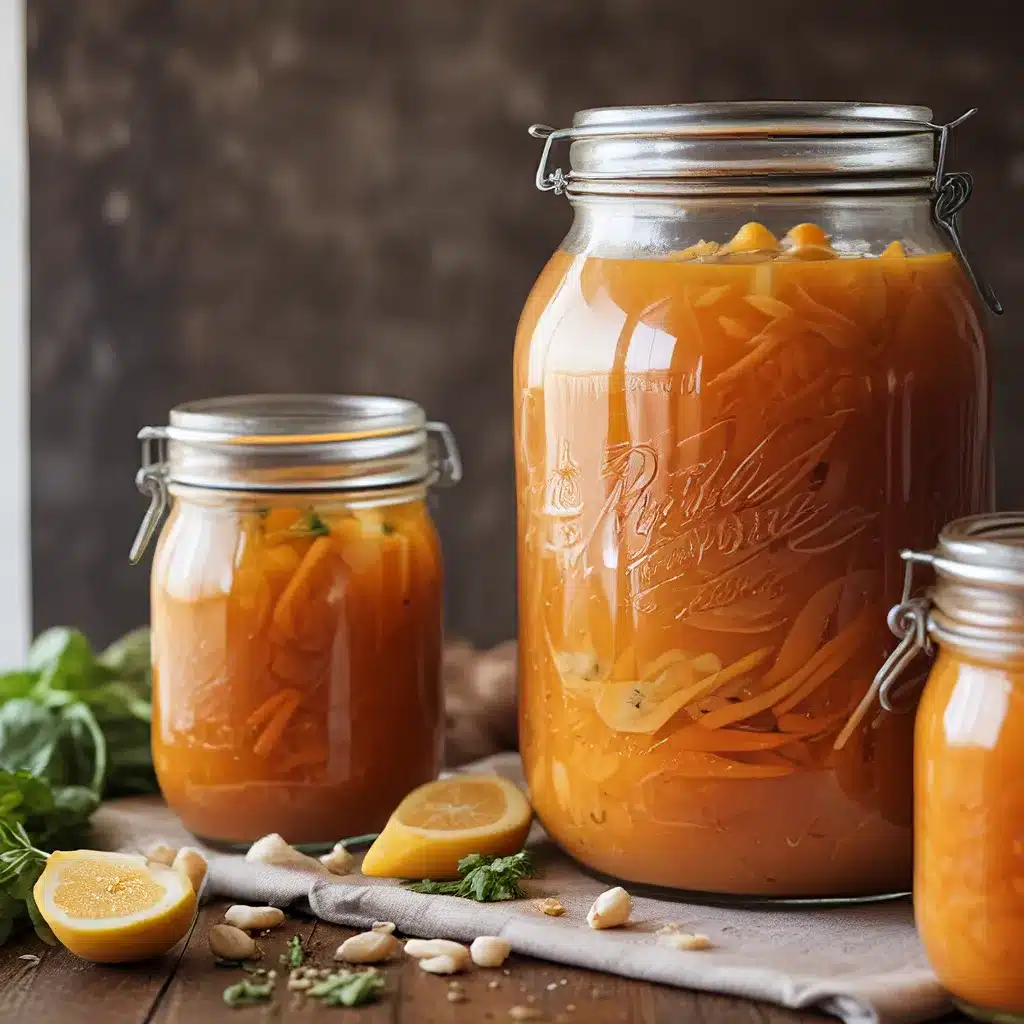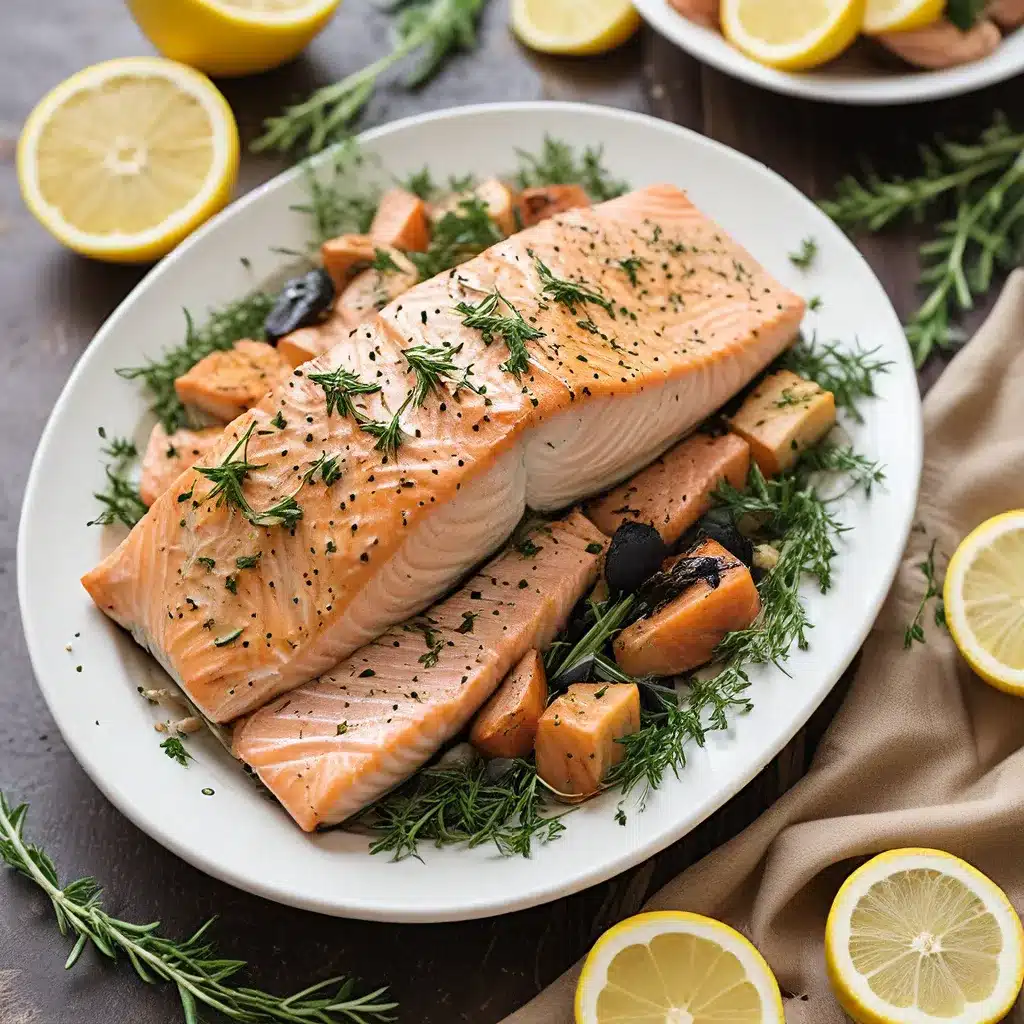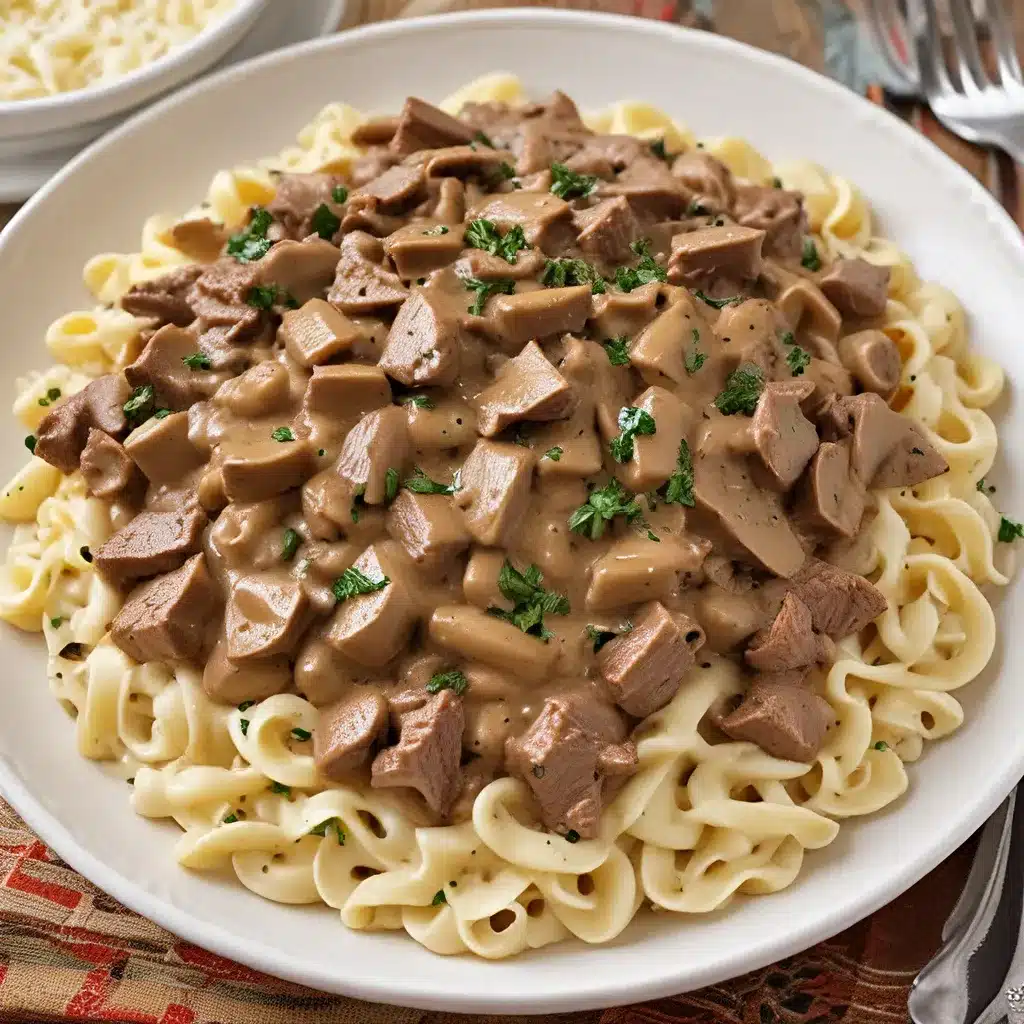
The Fermentation Fascination
As a self-proclaimed foodie and home cooking enthusiast, I’ve always been intrigued by the process of fermentation. There’s something almost magical about taking simple ingredients like flour, vegetables, or dairy and using the power of naturally-occurring microbes to transform them into delightfully complex and flavorful foods.
Fermentation has been around for centuries, but in recent years it’s experienced a real renaissance as more and more home cooks discover the joys (and health benefits) of fermenting foods at home. From classic sauerkraut to tangy sourdough bread, the fermented foods trend shows no signs of slowing down. And you know what? I’m completely on board.
The Benefits of Fermented Foods
While the unique flavors of fermented foods are certainly a big draw, there’s so much more to the fermentation story. Fermentation actually makes many foods more nutritious and easier to digest. How? Well, the process of fermentation, which is driven by lactic acid-producing bacteria, helps to break down complex carbohydrates, proteins, and other compounds into more readily absorbable forms.
Fermented vegetables, for example, are often richer in enzymes and probiotics than their unfermented counterparts. These gut-friendly nutrients can help support a healthy microbiome and even improve digestion for those who may have trouble with raw or cooked veggies.
But the benefits of fermentation don’t stop there. The lactic acid produced during fermentation can also help reduce the phytic acid content in grains and legumes. Phytic acid is an “anti-nutrient” that can bind to important minerals like iron, zinc, and calcium, making them less bioavailable. By breaking down phytic acid, fermentation makes these nutrients more accessible for our bodies to absorb.
So in short, fermented foods are not only delicious, but they can also be a valuable addition to a healthy, balanced diet. And the best part? You don’t have to be a culinary expert to start fermenting at home.
Getting Started with Fermentation
If the idea of fermentation seems a bit daunting, I completely understand. When I first started down this path, I had all sorts of questions and concerns. What if I accidentally create something unsafe to eat? How do I know if my ferment is progressing properly? And the big one – will my kitchen end up smelling like a locker room?
The truth is, fermentation is a relatively straightforward process once you get the hang of it. And with a little guidance, even beginner home cooks can enjoy the fruits (or, rather, the vegetables) of their fermentation labor.
One of the best places to start is with lacto-fermented vegetables. These are things like sauerkraut, pickles, and fermented onions – foods that rely on the natural lactic acid-producing bacteria found on the surface of veggies to do the work. All you really need are some fresh produce, a bit of salt, and a little patience.
Lacto-fermented veggies are a fantastic gateway into the world of fermentation, and they’re endlessly customizable. You can experiment with different flavor combinations, spice levels, and vegetables to find what you enjoy most. Plus, they make fantastic condiments to liven up all sorts of dishes.
Mastering the Sourdough Starter
Of course, no discussion of home fermentation would be complete without mentioning sourdough bread. This tangy, chewy loaf is the result of a wild yeast and bacteria culture that’s carefully nurtured and maintained by the baker. And let me tell you, there’s nothing quite like the satisfaction of pulling a freshly-baked sourdough boule out of your own oven.
Now, I know what you may be thinking – sourdough sounds like a lot of work. And you’re not wrong. Building and maintaining a healthy sourdough starter does require some dedication. But the payoff is so worth it. Once you get the hang of it, you’ll be whipping up all sorts of delicious sourdough treats, from rustic loaves to fluffy cinnamon rolls.
The key is to approach it step-by-step and not get discouraged. Start by creating your own sourdough starter from scratch, feeding it regularly, and learning to recognize the signs of a healthy, active culture. Then, you can dive into recipes that utilize your homemade starter for bread, pizza dough, and more.
Sure, it may take a bit of trial and error in the beginning. But trust me, the first time you slice into that perfect sourdough boule, all the effort will have been worth it. And you’ll be hooked on the magic of fermentation for life.
Fermented Favorites for Beginners
If you’re ready to dive into the world of home fermentation, here are a few beginner-friendly recipes to get you started:
Lacto-Fermented Onions
Onions are a fantastic vegetable to ferment, as the process helps mellow out their pungent flavor. The result is a tangy, probiotic-rich condiment that’s delicious on everything from salads to tacos. Plus, it’s incredibly easy to make at home with just a few simple ingredients.
Sourdough Bread
As I mentioned, mastering sourdough takes some patience and practice. But the beginner’s sourdough recipe is a great place to start. With just a handful of ingredients and a little hands-on time, you can bake up a beautiful loaf with a perfectly chewy crumb and crisp crust.
Fermented Carrots or Radishes
These colorful fermented veggies are another fantastic starter project. You can keep the flavors simple with just salt and spices, or get creative with mix-ins like garlic, ginger, or herbs. They make a wonderful probiotic-packed snack or salad topping.
The wonderful thing about fermentation is that the possibilities are truly endless. Once you get the hang of the basic process, you can start experimenting with all sorts of fruits, vegetables, grains, and even dairy products. The flavors, textures, and health benefits are endlessly fascinating.
So what are you waiting for? It’s time to get fermenting! With a little practice and patience, you’ll be well on your way to mastering the art of home fermentation. Who knows – you might even start looking at your kitchen scraps as potential fermentation projects. The fermentation fascination is real, my friends.






